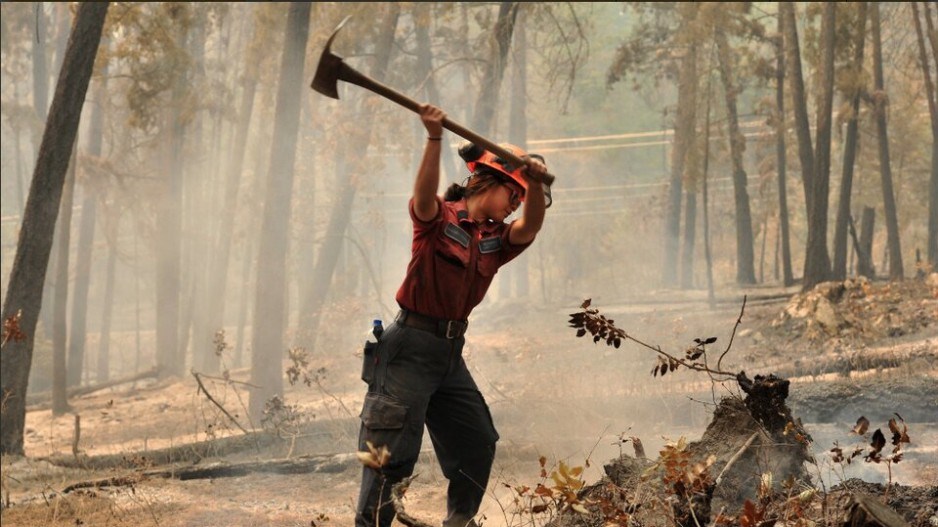Officials say the number of properties around Lake Okanagan destroyed or suffering significant wildfire damage has increased to 189, up from 181, as the region in B.C.'s southern Interior moves from response to recovery.
West Kelowna Fire Chief Jason Brolund has told a briefing that the destructive McDougall Creek fire is still burning out of control, but the battle against the blaze is now in the hills above the community, "not in the streets and neighbourhoods."
The Central Okanagan Emergency Operations Centre says the properties newly assessed as destroyed or badly damaged are all in West Kelowna or a nearby rural area.
Brolund has highlighted gains in the battle, with evacuation orders lifting for more than 1,000 properties since Friday, including Rose Valley Elementary School in West Kelowna, where he says teachers have gone back in to start setting up for classes.
Sally Ginter, chief administrative officer for the district, says operations are "transitioning" to recovery.
She says residents of West Kelowna Estates, properties with access from Bear Creek Main and neighbourhoods along Westside Road, should recheck the district's database of damaged and destroyed properties.
“Our hearts go out to all who have been impacted by this unprecedented fire event, and particularly to those whose homes have been significantly damaged or lost," Ginter told the briefing.
The BC Wildfire Service says more than 250 firefighters and field staff continue to battle the Grouse complex of fires around Lake Okanagan, with more than two-thirds devoted to the 126-square-kilometre McDougall Creek fire that swept down on West Kelowna on Aug. 17.
Persistent heat is meanwhile expected to continue Monday in parts of British Columbia as the province battles almost 400 active wildfires.
Environment Canada says several communities in northern B.C. are facing heat warnings, with daily high temperatures predicted to reach in excess of 30 degrees.
Communities currently under a heat warning include Fort Nelson, Fort St. John, Dawson Creek, Tumbler Ridge and Terrace.
According to Environment Canada data, Fort Nelson is expected to reach 32 C again today after breaking its historic high temperature for Aug. 27 at 32.4 C.
Historic daily high temperature records were also broken Sunday at Fort St. John (28.8 C) and Terrace (30.2 C), with the heat expected to reach or exceed 30 degrees in those communities today.
Wildfire smoke has also led to large swaths of British Columbia being placed under air quality advisories, which cover Metro Vancouver, much of Vancouver Island and communities such as Whistler, Kamloops, Kelowna, Golden, Fernie, Quesnel, Prince George and Smithers.
Firefighters had said they were anticipating potentially more challenging weather conditions this week after last week brought heavy rainfall to the Okanagan and Shuswap regions, helping crews turn the corner on a number of major blazes.
Residents of the Shuswap region who were forced from their homes by a destructive wildfire just over a week ago will soon learn the fate of their properties.
Derek Sutherland, director of the emergency operations centre for the Columbia Shuswap Regional District, says staff would start reaching out to residents on Monday.
He told a briefing Sunday that the estimated number of properties destroyed by the Bush Creek East wildfire is unchanged at 131, with another 37 sustaining damage.
Sutherland said the regional district is planning to open a resiliency centre in Salmon Arm to support displaced residents "now and well into the future."
As of Monday morning, the Bush Creek East blaze remained one of B.C.'s "wildfires of note," which are considered highly visible or pose a threat to public safety.
This report by The Canadian Press was first published Aug. 28, 2023.
The Canadian Press




